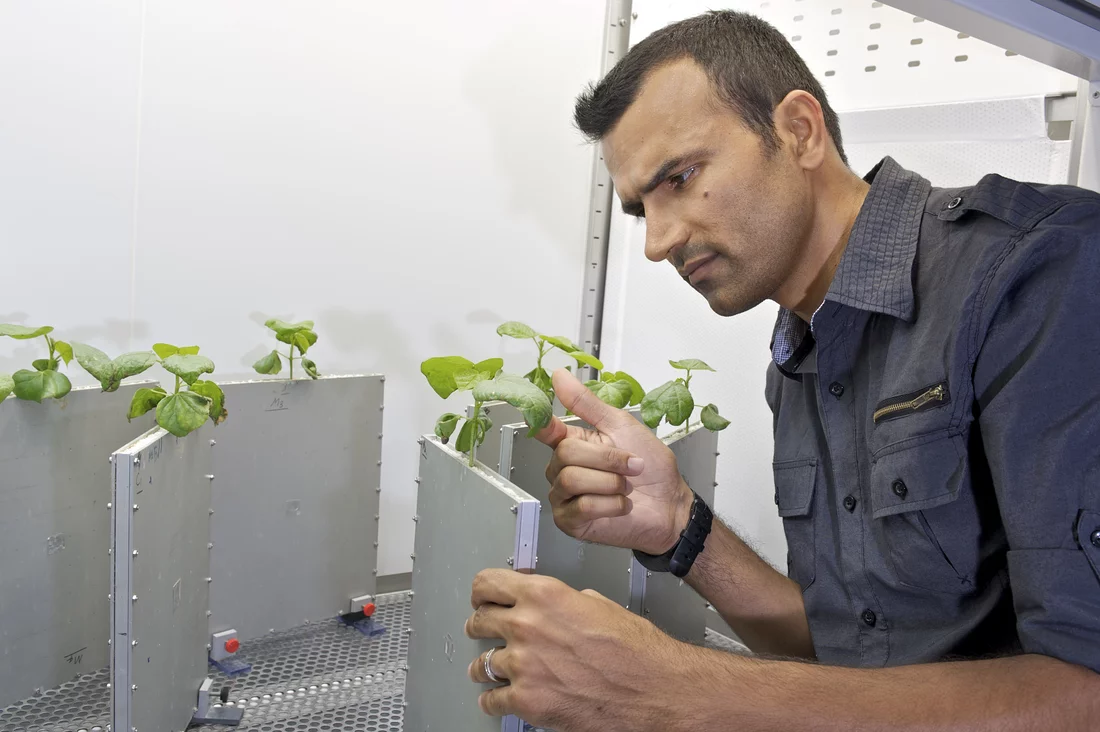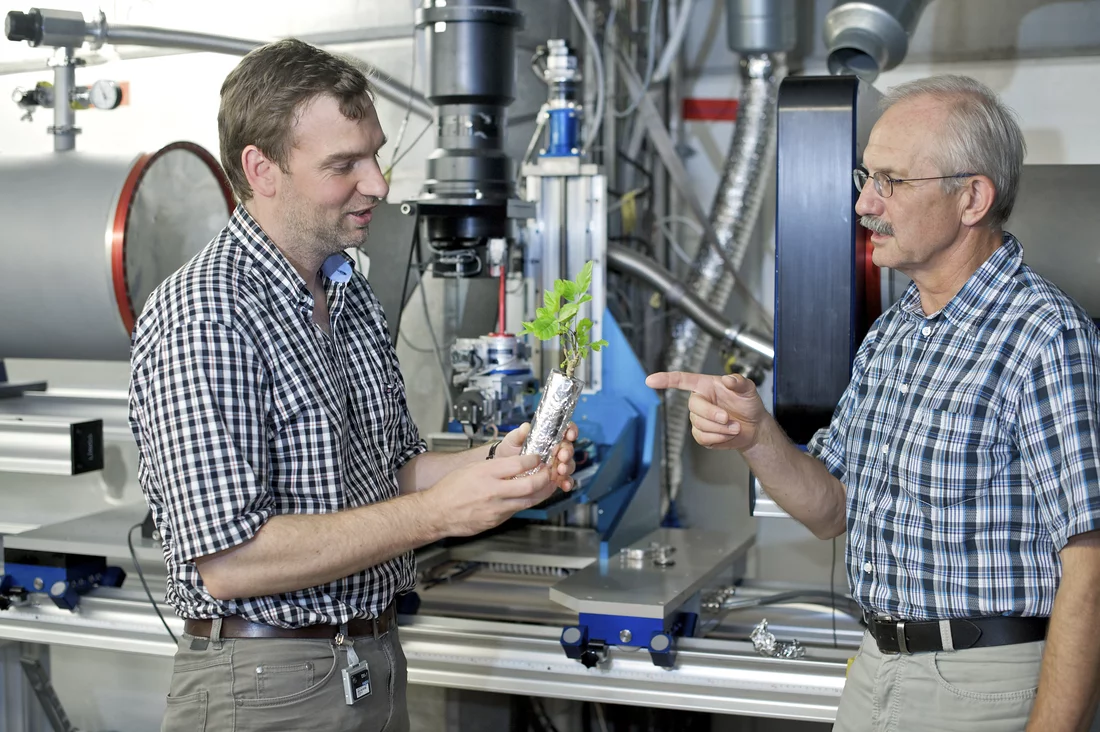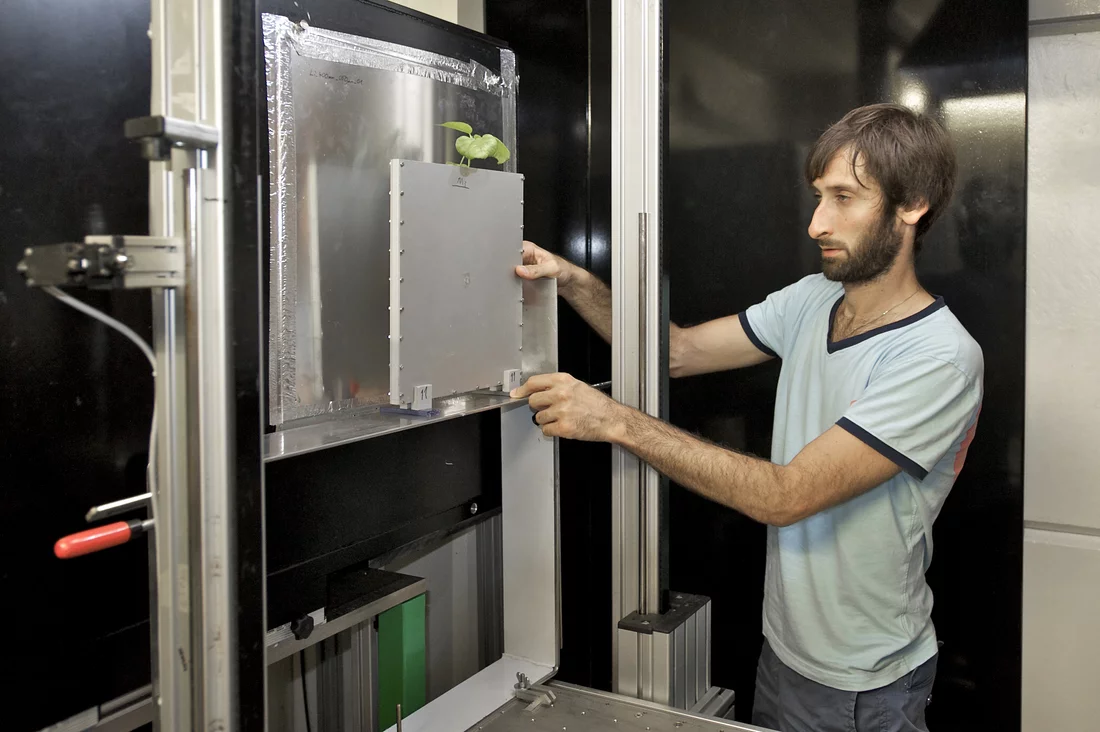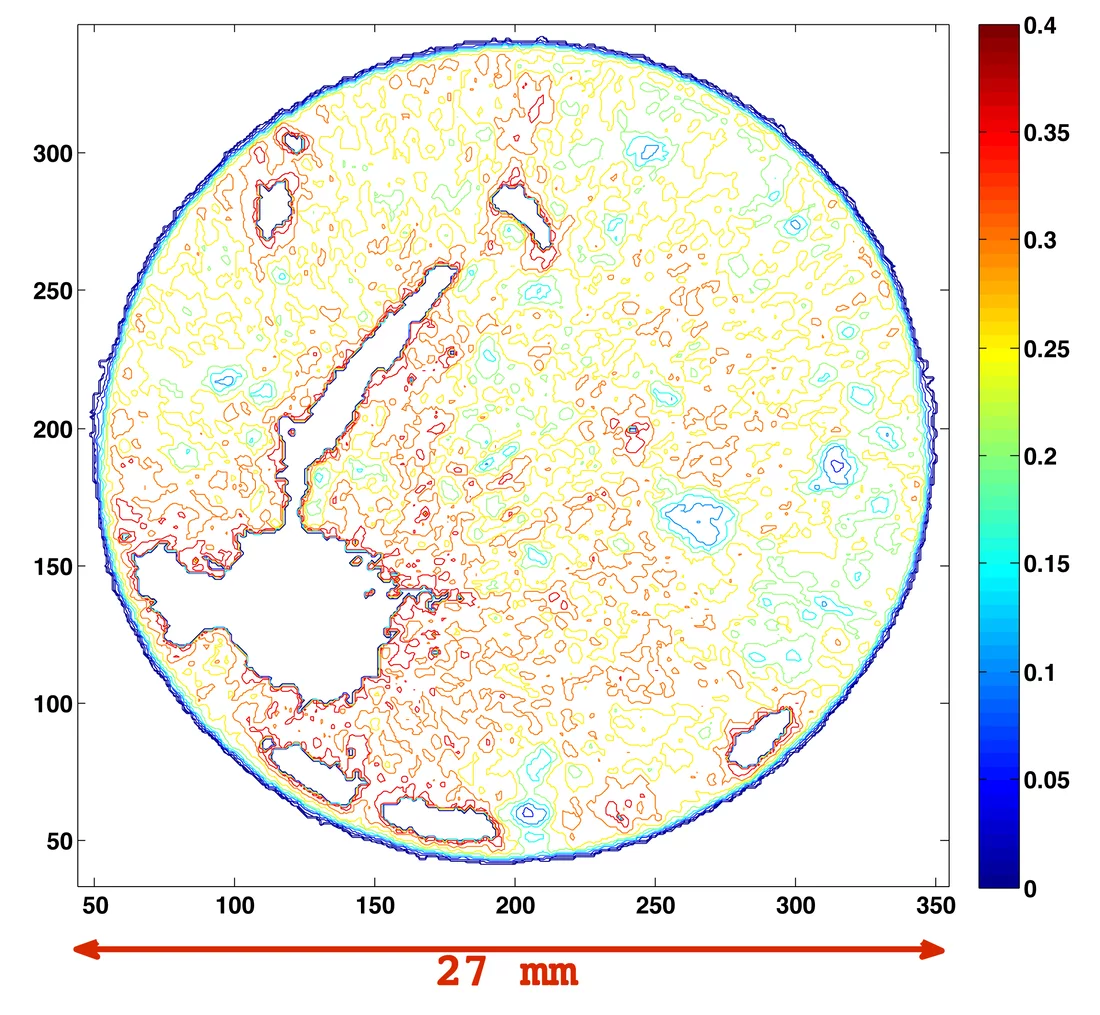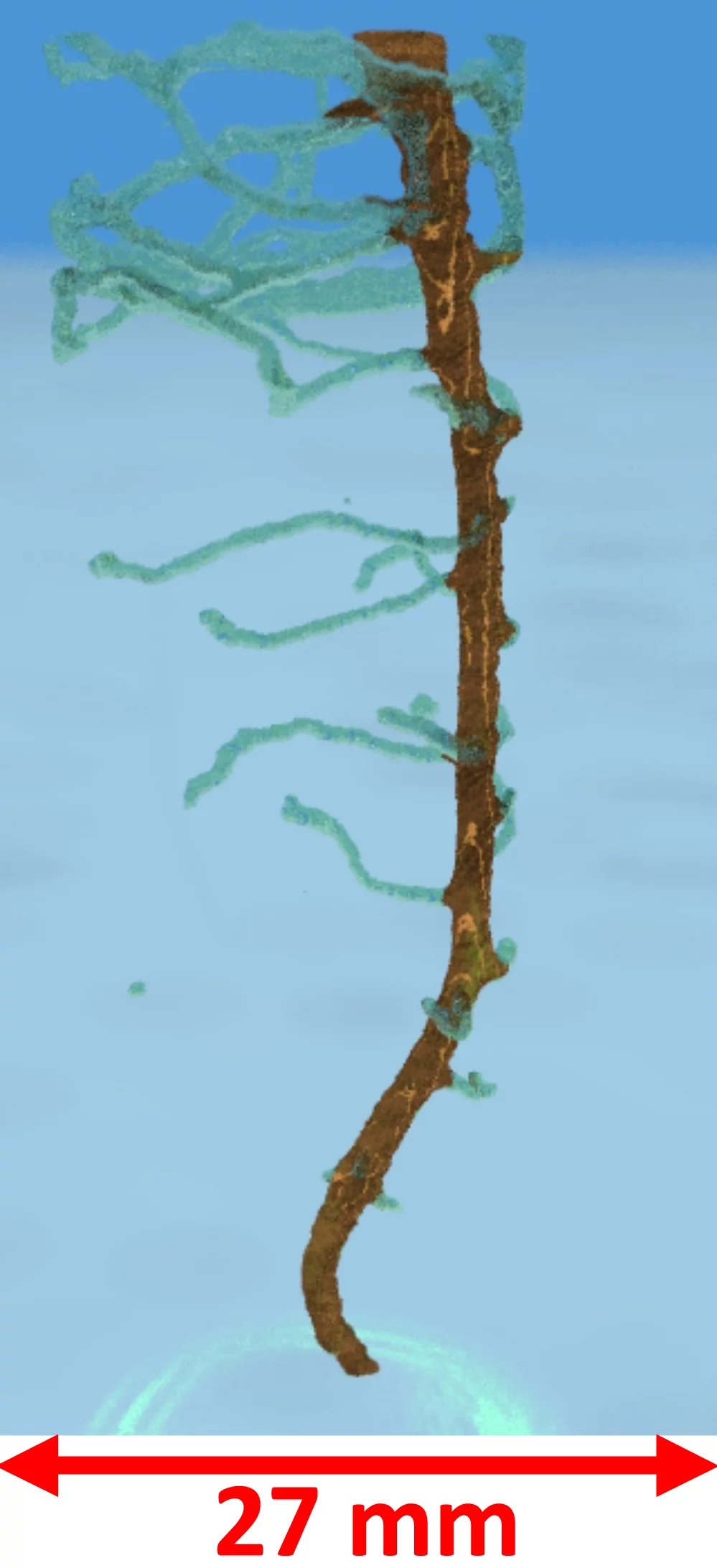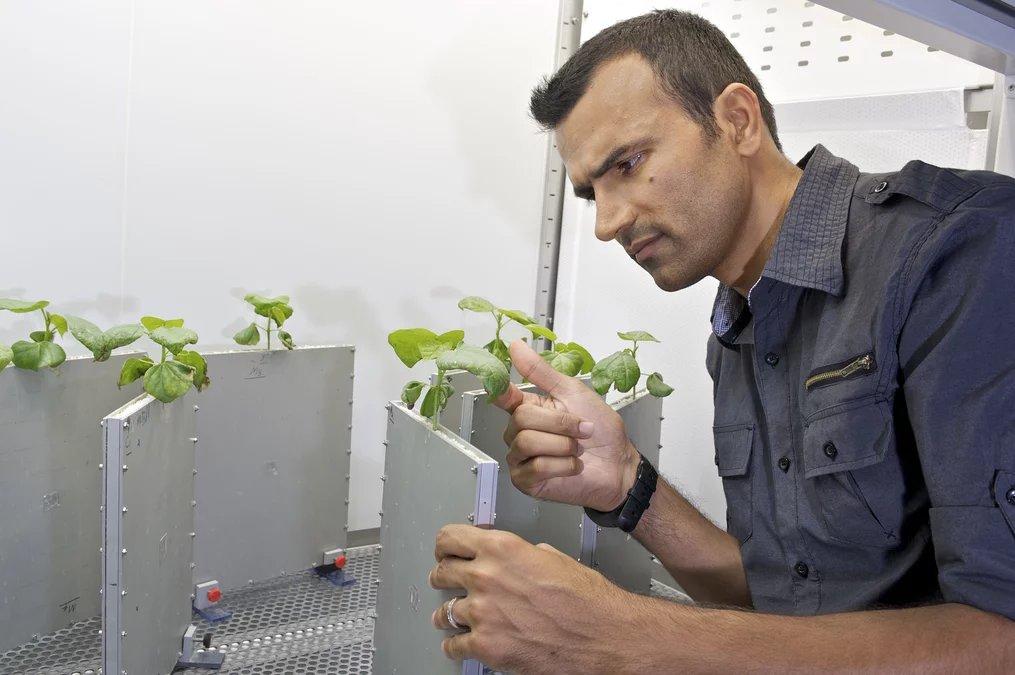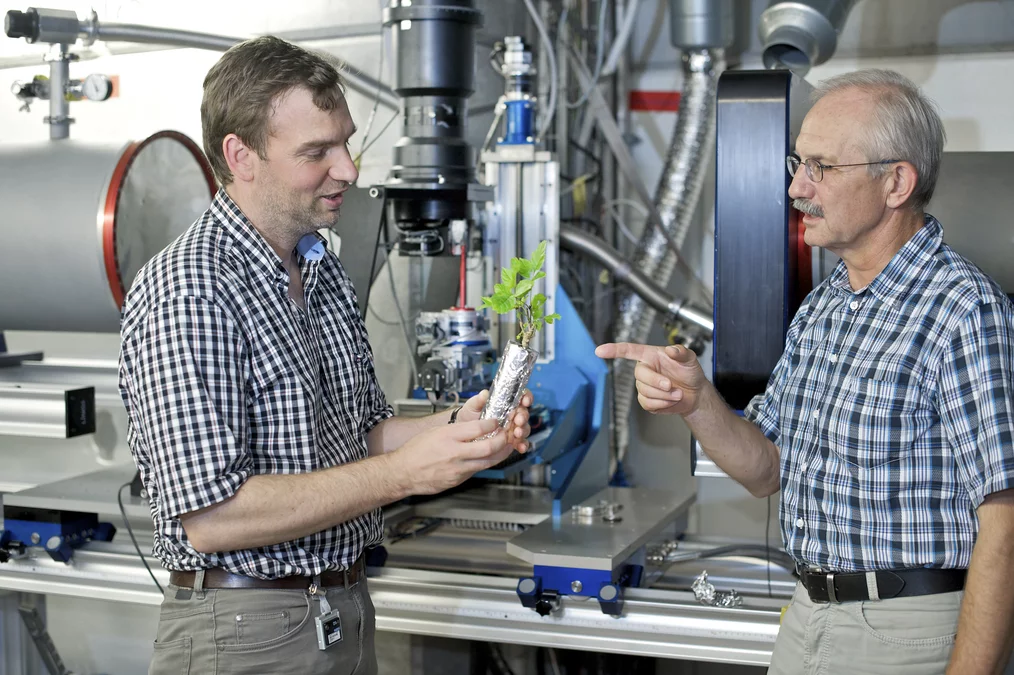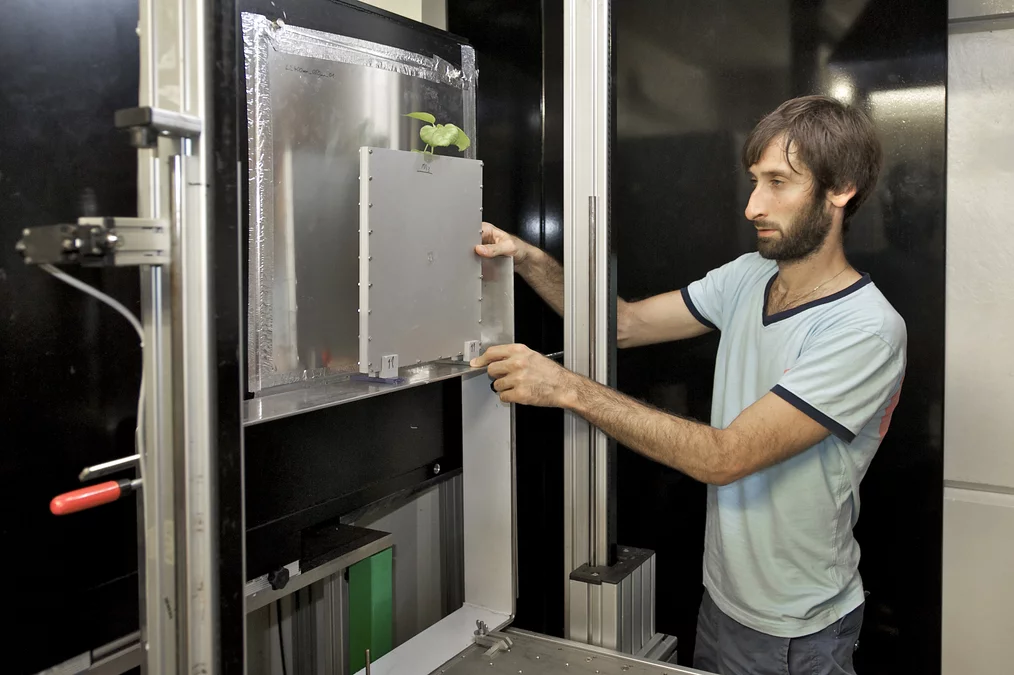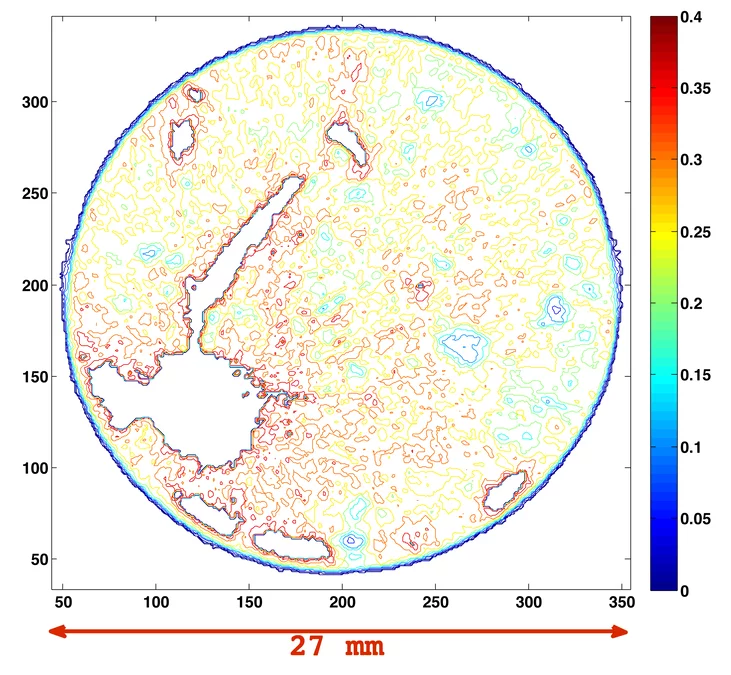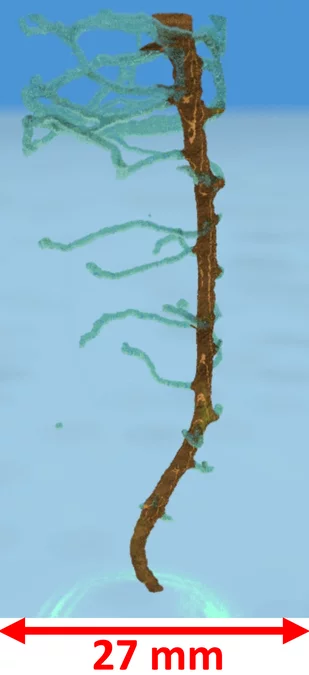Experiments performed at the Paul Scherrer Institute (PSI) reveal that a zone of higher water concentration exists around the roots of a plant.
It has long been known that roots alter the soil in their immediate vicinity, where other microorganisms live and the chemical composition is altered compared to that further away from the roots. An international research team has now demonstrated in experiments at the Paul Scherrer Institute that the soil in the vicinity of roots also contains more water – contrary to the earlier belief that there must be less water in this region, as the plant takes up water from the soil. Apparently, however, plants create a small water reserve that helps to tide them over through short periods of drought. These findings could help, in the long term, in the breeding of plants to cope better during periods of drought or in support of the development of efficient irrigation systems. These results were obtained from experiments carried out with the benefit of neutron tomography at the Paul Scherrer Institute, using a method that makes it possible to exactly show the distribution of water to a fraction of a millimetre, without having to remove a plant from the soil. The researchers have published their results in the prestigious journal New Phytologist.
The question of how plants take up water is not only relevant to the development of new, water-efficient strains of plants, but also for improving climate models,
explains Sascha Oswald, from the Institute of Earth and Environmental Science at the University of Potsdam, because typically more than half of all the water that falls onto the earth’s surface as rain in a humid climate is taken up by plants and then passes back to the atmosphere through the plants.
A research project on which he worked with a number of colleagues had the goal of showing what exactly happens at the place where a plant takes up water through its roots. Plants take water up from the ground by means of fine roots, a few millimetres in diameter. Their thicker roots serve more as pipelines, to relay the water. We want to understand the water distribution around these roots,
explains Ahmad Moradi, from the University of California Davis.
Neutrons reveal water content without damaging plants
The decisive processes occur here at a scale of a few millimetres. In order not to miss these processes, we need a procedure that shows details that are smaller than a millimetre and that can be applied without needing to remove the plant from the soil,
says Moradi of the technical challenge. The researchers found the appropriate method at the Paul Scherrer Institute in the form of neutron tomography. Here, they were able to send neutrons through plants, together with the soil around their roots. Using these particles, it is possible to see inside different objects, in a similar manner to using X-rays but making different internal components visible. Specifically, neutrons are particularly attenuated and scattered away by water, whereas metal or sand are essentially invisible to them. Roots consist to almost 90% of water. When one wants to examine them, or the movement of water in the soil, then neutrons are far better tools than X-rays,
explains Moradi.
The researchers were thus able to create an exact three-dimensional image of the water distribution around the roots and determine how much water was present at different positions in the soil. The microscope option of the facility was used for this measurement, so that images with a resolution of 20 pixels per millimetre could be generated. In this way, it was possible to make the water visible to the required accuracy,
explains Eberhard Lehmann, whose group operates the facilities at PSI. We have three measurement stations at which we can create images with neutrons – each with its own characteristics. Thus we were able to try out different options for the experiment. A great advantage of the PSI facility is also that it is in operation 24 hours a day, and thus plants could be observed over a complete day-night cycle.
PSI is the only centre in Switzerland at which neutrons are available for research.
More water at the roots
The result obtained from this study is that the soil in a region within a few millimetres from roots contains about 30% more water than the rest of the soil. It has long been known that roots significantly alter their immediate environment. In this so-called rhizosphere live a much higher number of different microorganisms than elsewhere and the concentration of nutritious metals is lowered, because the plant extracts metal ions from the soil. It had previously been thought, however, that this was also the case for water – the general picture was that the water concentration near roots was lower than that further away, because the roots extract water from the soil and water only flows into this region with time. The experiments contradicted this belief, for all three types of plants tested – maize, lupines and chick peas.
Water reserve for bad times
We can now only speculate about the question as to how the water concentration around the roots becomes higher. It is probable that a gel-like substance that the roots exude is responsible. This substance can absorb 10,000 times its own dry weight of water. In this way, plants could create an emergency supply for short periods of drought,
explains the soil physicist Andrea Carminati, from the University of Göttingen. Even if this emergency supply does not suffice for longer periods of drought, it can help cover periods of up to 12 hours in which the plant would otherwise be cut off from a supply of water. If one thinks about the practical applications of these results, then they can help in the breeding of plants which can survive dry periods better. One could also learn exactly how much to water plants, so that they do not come to long-lasting harm through drying out,
adds Sascha Oswald.
The project
This research project was carried out by scientists from the Helmholtz Centre for Environmental Research – UFZ, the University of California Davis, the University of Potsdam and the University of Göttingen, who had all previously worked together at the UFZ. The experiments described here were performed at the Paul Scherrer Institute, PSI (Villigen, Switzerland) and supervised by PSI scientists.
Text: Paul Piwnicki
About PSI
The Paul Scherrer Institute develops, builds and operates large, complex research facilities, and makes them available to the national and international research community. The Institute's own key research priorities are in the investigation of matter and material, energy and the environment; and human health. PSI is Switzerland's largest research institution, with 1400 members of staff and an annual budget of approximately 300 million CHF.
About UC Davis
For more than 100 years, UC Davis has engaged in teaching, research and public service that matter to California and transform the world. Located close to the state capital, UC Davis has more than 32,000 students, more than 2,500 faculty and more than 21,000 staff, an annual research budget that exceeds $678 million, a comprehensive health system and 13 specialized research centers. The university offers interdisciplinary graduate study and more than 100 undergraduate majors in four colleges — Agricultural and Environmental Sciences, Biological Sciences, Engineering, and Letters and Science. It also houses six professional schools — Education, Law, Management, Medicine, Veterinary Medicine and the Betty Irene Moore School of Nursing.
About the University of Potsdam
The University of Potsdam, founded in 1991, is one of the youngest universities in Germany. It is the largest university in the State of Brandenburg, with more than 100 study programmes in 30 disciplines, where almost 21,000 students receive their academic education. About 250 professors, together with a total of 2000 other staff, are employed in the areas of science/research and technology/administration, with a particularly prominent role currently being played by the cognitive, biological and earth sciences.
Contact
Dr. Ahmad Moradi, Department of Land, Air and Water Resources, University of California Davis, Davis, CA 95616, USAE-Mail: amoradi@ucdavis.edu; Tel: +1 805 886 3919
Dr. Eberhard Lehmann, Group Head of Neutron Imaging, Paul Scherrer Institute, 5232 Villigen PSI, Switzerland
E-Mail: eberhard.lehmann@psi.ch; Tel: +41 56 310 29 63
Prof. Dr. Sascha Oswald, Institute for Earth and Environmental Science, University of Potsdam, 14476 Potsdam-Golm, Germany
E-Mail: sascha.oswald@uni-potsdam.de, Tel: +49 331 977 2675
Dr. Andrea Carminati, Department of Crop Sciences, Georg-August University of Göttingen, 37018 Göttingen, Germany
E-Mail: acarmin@uni-goettingen.de, Tel: +49 551 39 4629
Prof. Dr. Hans-Jörg Vogel, Helmholtz-Centre for Environmental Research – UFZ, Department Soil Physics. 06120 Halle, Germany
E-Mail: hans-joerg.vogel@ufz.de, Tel: +49 345 558 5403
Original Publication
Three-dimensional visualization and quantification of water content in the rhizosphere Ahmad B. Moradi, Andrea Carminati, Doris Vetterlein, Peter Vontobel, Eberhard Lehmann, Ulrich Weller, Jan W. Hopmans, Hans-Jörg Vogel and Sascha E. Oswald New Phytologist (2011)DOI: 10.1111/j.1469-8137.2011.03826.x

